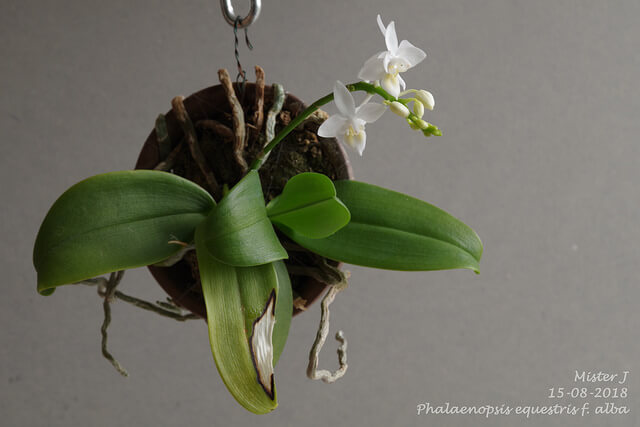Nowadays, a lot of people try to plant their own flowers in their very own house. Orchids are one of the most popular plants for the beginner as they have attractive appearances and sometimes emit wonderful fragrances. It also serves as additional decoration in both houses and gardens with its diverse color and looks.
Despite its beautiful looks, orchids care can be pretty difficult for some people because they need a certain environment to be able to do well. Sometimes, beginners are faced with the occurrence yellow leaves on orchid.
This leads to questions: is my plant sick, is it dying, what can I do to prevent the leaves from yellowing? You do not have to be panic. In this article, we will try to give a brief explanation of what is actually happening with your beloved orchids
First, understanding the natural lifecycle of an orchid is very important, especially for beginners.
Orchid grows new leaves and new pseudo-bulbs if any. From this growth, the new bloom is coming. The older leaves and older pseudobulbs will die over time, in the same way, that new growth comes. This process is completely natural and normal.
Repotting sometimes induces stress and it will lead to the loss of one or two leaves and an old pseudobulb from the flower. This process is also normal and it is not something that needs to be concerned. Yellow leaves on orchid can be the results of those process.

via j_mister24
The change in environment, from greenhouse to dry home can also trigger this process. This also does not need too much attention as the process happen normally.
There is a broad rule of thumb that orchids will have at least one leaf for every 10% humidity. If your house is a dry house with only 40% humidity, having 4 leaves is very normal, despite 8 leaves that it used to have on an 80%-humidity greenhouse. During the transition from the grower’s environment to a home, an orchid is likely to adjust accordingly and this includes dropping leaves. That is why humidity trays are so important in a home environment.
However, if yellow leaves on orchid occur from the top of the plant or multiple leaves turn into yellow, there may be a problem with your dear plants. You have to check whether the leaves are still plump and firm or not. If it is a yes, then your plants is probably receiving too much light. This excessive light washes out the color of your leaves.
You also need to check for wrinkles and list. If the leaves have those characteristics, then your plant is most likely dehydrated. Other causes that probably affecting the color of the leaves is low temperature and root rot.
Isolate the plant away from any other orchids to prevent any infections to healthy orchids. The following steps are the steps to determine the problem:
If you already find the core problem and resolve it, you are now left with the option of letting the yellow leaves on orchid to shed by itself or to cut it.
The orchid will naturally shed the leaves and you do not really have to do anything about it. You just need to wait. After it sheds its yellow leaves, it will naturally seal off the area where the leaf had attached and nothing need be done.
But if the yellow leaves make you feel uncomfortable, you can just cut it. Make sure you cut it with a clean tool to avoid the possibility of spreading virus from one orchid to another. You can also apply cinnamon, if any, to the cut area, to reduce the chance of any opportunistic infections that will try to set in.
Overall, yellow leaves on orchid are usually not as dangerous as what we think. Some of the causes are actually normal to happen, as yellowing leaves is a part of orchids natural process.
We can solve the problem by paying attention to several aspects in cultivating orchids, such as light, temperature, water, air circulation, humidity, and so on.
By taking care of your orchid, it will ensure the life and the optimum growth of the orchids. If you encounter problems that are unfamiliar, do not be afraid to ask some experts, especially if fungus and bacterial infection occurs. You can broaden your knowledge about how to take care of orchids by reading botanical magazines or joining orchids clubs in your region. In this way, you can prevent anything bad happening to your dear orchids.